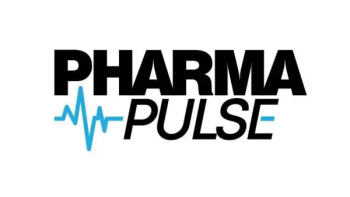Historically, new drugs were approved for a single therapeutic use. However, industry trends have shifted, with pharmaceutical companies increasingly identifying and developing additional indications for existing medicines. This approach is supported by regulatory agencies such as the FDA and EMA, which recognize the value of leveraging established safety profiles for new uses.
As a result, the number of expanded indications for drugs has nearly doubled in the past decade. Platform drugs—those whose core technology can be adapted for multiple indications—are especially attractive. Once a drug’s safety is established for its first indication, regulatory risks for additional approvals are reduced, making this a cost-effective way to bring new therapies to market.
Branding strategies: Single versus multiple brands
Choosing between a single brand or multiple brands for a drug with several indications is a complex and high-stakes decision. The optimal approach depends on several factors. The regulatory environment plays a key role; the FDA is generally cautious about multiple brand names for the same molecule, primarily due to concerns about medication errors and overdosing. Multiple brands may be permitted if there is stigma associated with one indication, significant dosage differences, or low comorbidity between indications.
The EMA is more flexible, allowing different trademarks for new marketing authorizations if justified by public health or co-marketing needs, though applicants must justify the need for multiple brands and demonstrate how patient safety will be maintained.
Therapeutic area differences also influence branding decisions. If indications are closely related—such as within the same therapeutic class—a single brand is often preferred. Conversely, if indications are unrelated or have significant differences in patient populations, dosing, or disease severity, multiple brands may be more appropriate. Patient safety and social stigma are additional considerations; dual branding can help avoid confusion and reduce the risk of overdose, especially when dosing or patient populations differ significantly. It can also help mitigate social stigma associated with specific indications, such as erectile dysfunction.
Key Takeaways
- Drugs with closely related indications often use one brand, while those treating distinct conditions may benefit from dual branding to address safety, stigma, or dosing differences.
- The FDA is generally cautious about multiple brand names for the same molecule, while the EMA allows them when justified by public health needs or marketing strategy.
- Identifying future indications early, coordinating cross-functional teams, and leveraging advanced analytics are critical to optimizing branding decisions and maximizing commercial success.
Classic and recent examples
Classic examples illustrate the application of these strategies. For instance, Cialis (tadalafil) is marketed for erectile dysfunction, while Adcirca (also tadalafil) is used for pulmonary arterial hypertension. The rationale for dual branding includes unrelated therapeutic areas, different patient populations, stigma associated with erectile dysfunction, and significant dosage differences. Similarly, Viagra (sildenafil) is indicated for erectile dysfunction, while Revatio (also sildenafil) is used for pulmonary arterial hypertension. The same reasoning applies to different dosing and patient populations, leading to the use of two distinct brands to differentiate indications and manage stigma.
In contrast, Enbrel (etanercept) is used for both rheumatology and dermatology autoimmune diseases. Because these indications are closely related, a single brand is maintained across uses, leveraging the established reputation and safety data.
Recent examples further highlight these considerations. Humira (adalimumab) is prescribed for multiple autoimmune indications, including rheumatoid arthritis, psoriasis, Crohn’s disease, and ulcerative colitis. A single brand is used across all indications, reinforcing market leadership and the safety profile due to overlapping prescribers and consistent dosing. Keytruda (pembrolizumab) is another example of a single brand maintained across multiple oncology indications, including melanoma, non-small cell lung cancer, and head and neck cancer, due to its broad use across various cancer types and similar dosing and administration.
Ozempic (semaglutide) is indicated for type 2 diabetes, while Wegovy (also semaglutide) is used for chronic weight management. The use of two distinct brands helps differentiate between diabetes and weight management, addressing regulatory and safety concerns, even though patient populations may overlap. Prolia (denosumab) is used for osteoporosis, while Xgeva (also denosumab) is indicated for cancer-related bone complications. Dual branding reflects distinct clinical needs and dosing regimens.
Similarly, Zometa (zoledronic acid) is used for cancer-related bone complications, and Reclast (also zoledronic acid) is indicated for osteoporosis, with dual branding helping to avoid confusion and ensure appropriate use.
Strategic considerations and operational challenges
When adopting a single-brand approach, it is important to identify all potential indications early to choose a versatile trademark. Sales and marketing efforts must be coordinated across indications, especially if targeting primary care physicians. Developing a unified brand character and clear communication about the drug’s mechanism across indications is essential. Sales and medical teams should be trained to address questions about all indications.
For a multi-brand approach, it is essential to engage regulatory authorities early in the development process. Managing global trademark availability and protection can be complex and costly. Separate brand teams and plans may be necessary, but maintaining cross-functional collaboration is crucial.
Pricing and inventory must be monitored for each brand, particularly if doses overlap or differ. Clear implementation plans and resources should be provided for regional affiliates.
Data-driven insights
Understanding treatment patterns at the facility level is critical for optimizing resource allocation and identifying growth opportunities for multi-indication drugs. Sales figures alone may not reveal which indications are driving growth, highlighting the need for advanced analytics to inform strategy.
Overall, pharmaceutical companies must carefully weigh regulatory, commercial, and operational factors when deciding between single-brand and multiple-brand strategies for drugs with multiple indications. Classic examples such as Cialis/Adcirca and Viagra/Revatio demonstrate the importance of therapeutic area differences, patient populations, and stigma. Recent cases, including Humira, Keytruda, Ozempic/Wegovy, Prolia/Xgeva, and Zometa/Reclast, highlight the ongoing relevance of these considerations in today’s market. Early planning, clear communication, and data-driven insights are crucial for maximizing value and ensuring patient safety.
About the Authors
The views expressed in the article are those of the authors and not of the organizations they represent.
Partha Anbil is at the intersection of the life sciences industry and data & analytics, including GenAI/ML/NLP. He is a Senior Advisor to NextGen Invent Corporation, an AI, data analytics, and digital transformation company. He has over 25 years of experience in the industry.
Kamini Anbil is an experienced consultant in the life sciences industry. She spent six years with ZS Associates, a top boutique global management consulting and technology firm specializing in the Life Sciences sector.




